Market Economy vs. Command Economy: What's the Difference?
Developed and Developing Countries: An Overview
It's difficult to determine how best to quantify the difference between developed and developing countries. Although gross domestic product (GDP) is one of the most well-known values for assessing economic health, several other metrics can also be used to gauge a nation's development.
| Top Countries by GDP in Current U.S. Dollars | |
|---|---|
| Country | 2023 GDP (Current USD) |
| United States | $27.36 trillion |
| China | $17.79 trillion |
| Germany | $4.46 trillion |
| Japan | $4.21 trillion |
| India | $3.55 trillion |
While some metrics have the potential to be more accurate than others, none of them are inherently wrong to use. To further complicate matters, most countries are large, complex entities that can't be neatly categorized. As a result, several nations exhibit characteristics of more than one category.
Below are the development statuses of the 32 countries with the highest GDPs.
Key Takeaways
- Countries may be classified as either developed or developing based on the gross domestic product (GDP) or gross national income (GNI) per capita, the level of industrialization, the general standard of living, the amount of technological infrastructure, and several other potential factors.
- According to the United Nations (UN), a nation's development status is a reflection of its "basic economic country conditions."
- The Human Development Index (HDI) is an alternative metric for development status created by the United Nations that's used to assess the social and economic development levels of countries based on life expectancy, educational attainment, and income.
- The United States was the richest developed country on Earth in 2023, with a total GDP of $27.36 trillion.
- China was the richest developing country on Earth in 2023, with a total GDP of $17.79 trillion.
Developed vs. Developing Definition
Even experts do not agree on a consistent definition of a developed country. For instance, the United Nations (UN) classifies countries as either developed economies, economies in transition, or developing economies, although it doesn't specify its basis for these groupings other than that they "reflect basic economic country conditions."
The International Monetary Fund (IMF), on the other hand, takes several different factors into account when determining whether a nation is an advanced economy, an emerging market and developing economy, or a low-income developing country.
The World Bank uses gross national income (GNI) per capita for its measurements, and it has four different categories: high-income economies, upper-middle-income economies, lower-middle-income economies, and low-income economies.
The purpose of this article is to highlight the development status of the 32 largest countries on Earth by GDP. This metric was chosen to better illustrate how nations meeting the traditional criteria for being wealthy can still be considered developing.
That being said, countries on this list have been categorized according to the UN's standards because its classification system is the closest to Investopedia's definitions of "developed" and "developing."
What Is a Developing Country?
A nation is typically considered to be developing if it does not meet the socioeconomic criteria listed above. Simply put, these are most often countries with a lower income, an underdeveloped industrial base, a lower standard of living, and a lack of access to modern technology. As a result, developing nations frequently experience a lack of jobs, food, clean drinking water, education, healthcare, and housing.
The UN's List of Developing Countries
According to the UN, there are 125 developing economies in 2024.
In Africa, the following economies are classified as developing: Algeria, Angola, Benin, Botswana, Burkina Faso, Burundi, Cabo Verde, Cameroon, Central African Republic, Chad, Comoros, Congo, Côte d'Ivoire, Democratic Republic of the Congo, Djibouti, Egypt, Equatorial Guinea, Eritrea, Eswatini, Ethiopia, Gabon, Gambia, Ghana, Guinea, Guinea-Bissau, Kenya, Lesotho, Liberia, Libya, Madagascar, Malawi, Mali, Mauritania, Mauritius, Morocco, Mozambique, Namibia, Niger, Nigeria, Sao Tome and Principe, Senegal, Sierra Leone, Rwanda, Somalia, South Africa, South Sudan, Sudan, Togo, Tunisia, Uganda, United Republic of Tanzania, Zambia, and Zimbabwe.
In Asia, the following economies are classified as developing: Afghanistan, Bahrain, Bangladesh, Bhutan, Brunei, Cambodia, China, Darussalam, Democratic People's Republic of Korea, Fiji, Hong Kong, India, Indonesia, Iraq, Iran, Israel, Jordan, Kiribati, Kuwait, Laos, Lebanon, Malaysia, Maldives, Mongolia, Myanmar, Nepal, Oman, Pakistan, Papua New Guinea, Philippines, Qatar, Samoa, Saudi Arabia, Singapore, Solomon Islands, Sri Lanka, State of Palestine, Syria, Taiwan, Thailand, Timor-Leste, Türkiye, United Arab Emirates Vanuatu, Vietnam, and Yemen.
In Latin America and the Caribbean, the following economies are classified as developing: Argentina, the Bahamas, Barbados, Belize, Bolivia, Brazil, Chile, Colombia, Costa Rica, Cuba, Dominican Republic, Ecuador, El Salvador, Guatemala, Guyana, Haiti, Honduras, Jamaica, Mexico, Nicaragua, Panama, Paraguay, Peru, Suriname, Trinidad and Tobago, Uruguay, and Venezuela.
What Is a Developed Country?
A nation is typically considered to be developed if it meets certain socioeconomic criteria. In some cases, this can be as simple as having a sufficiently developed economy.
Where that isn't adequate, other qualifiers can include, but are not limited to, a country's GDP/GNI per capita, its level of industrialization, its general standard of living, and/or the amount of technological infrastructure it has. These factors are typically interconnected (i.e., the level of available technology can impact the amount of GDP a country is capable of generating, etc.).
According to the UN, 36 countries were considered developed in 2023. All developed countries were located in either North America, Europe, or "Developed Asia and Pacific."
Developed countries typically share several other characteristics:
- Their birth and death rates are stable. They do not have very high birth rates because, thanks to quality medical care and high living standards, infant mortality rates are low. Families do not feel the need to have large numbers of children in expectation that some will not survive.
- They have more women working. These career-oriented women may have chosen to have smaller families or avoided having children altogether.
- They use a disproportionate amount of the world's resources. In developed countries, more people drive cars, fly on airplanes, and power their homes with electricity and gas. Inhabitants of developing countries often do not have access to technologies that require the use of these resources.
- They have higher levels of debt. Nations with developing economies cannot obtain the kind of seemingly bottomless financing that more developed nations can.
Fast Fact
Due to definitional discrepancies, countries such as Mexico, Greece, and Turkey are considered developed by some organizations and developing by others.
Who Gets Development Aid?
Development status determines which countries have a right to receive development aid under the rules of a multilateral or bilateral agency, such as the World Trade Organization (WTO). This is likely the primary reason why there are so many varied definitions of "developed" versus "developing," as each organization has different qualifications for what should constitute the latter and receive their assistance.
This is also why even the terminology is inconsistent as this binary is often insufficient for categorizing large, complex territories. For instance, the World Bank announced in 2016 that it would no longer be distinguishing between developing countries and developed countries due to the terms no longer being considered relevant.
Which Countries Have the Highest GDP Per Capita?
GDP represents the total monetary or market value of all the finished goods and services produced within a country's borders in a specific time period. The calculation of a nation's GDP encompasses all private and public consumption, government outlays, investments, additions to private inventories, paid-in construction costs, and the foreign balance of trade.
While useful for acquiring a snapshot of the world's economic powerhouses, this metric by itself is typically insufficient. Every country has a different population, which means that looking exclusively at GDP can distort the truth and/or be so obvious as to be meaningless. Of course, a nation as large as China, with a total population of 1.4 billion people as of 2024, would have a larger GDP than a much smaller country like Ireland, which has a total population of 5 million.
GDP per capita is a much more relevant statistic for illustrating how a hypothetical average citizen might experience a nation's economic output. GDP per capita, a tally of all the goods and services produced in a country in one year (as expressed in U.S. dollars) per person, is a useful metric for distinguishing developed countries from developing ones. It is calculated by dividing a country's GDP by its total population.
For example, the population of China is approximately 280 times larger than the population of Ireland. Yet, according to GDP per capita, the typical Irish person ($103,983 in 2022) is nearly eight times richer than their Chinese counterpart ($12,720 in 2022), even though their country is so much smaller. The countries with the highest GDP per capita are often those with an unusual concentration of wealth.
Another Metric: Human Development Index
Another measuring device, the Human Development Index (HDI), was developed by the UN to assess the social and economic development levels of a given country. HDI quantifies life expectancy, educational attainment, and income into a standardized number between zero and one. The closer the number is to one, the more developed the country. No minimum requirement exists for developed status, but most developed countries have HDIs of 0.8 or higher.
The life expectancy aspect of the HDI is calculated at the time of birth. It is equal to zero when life expectancy is 20 and equal to one when life expectancy is 85. Education is measured according to the mean years of schooling for residents of a country and the expected years of schooling that a child has at the average age for starting school. Finally, the metric chosen to represent the standard of living is GNI (gross national income) per capita based on purchasing power parity (PPP).
Usefulness of HDI
This index is useful for examining the impact of policy choices made by each nation. For example, if two countries have approximately the same GNI per capita but wildly different HDI scores, then it stands to reason that these disparities could stem from policies regarding life expectancy, educational attainment, or another factor unrelated to economic health.
It's important to remember no set minimums or maximums exist for these metrics. Economists look at the totality of a country's situation before rendering judgment about a country's development status, and they do not always agree on it.
Development Status of the Top 32 Countries by GDP
Here is our analysis of the development status of the top 32 countries by GDP, organized alphabetically. Of this total, 15 countries are considered developed, nine are considered developing, and one is considered in transition.
All figures are as of 2023 (except where noted), the latest information available.
Argentina
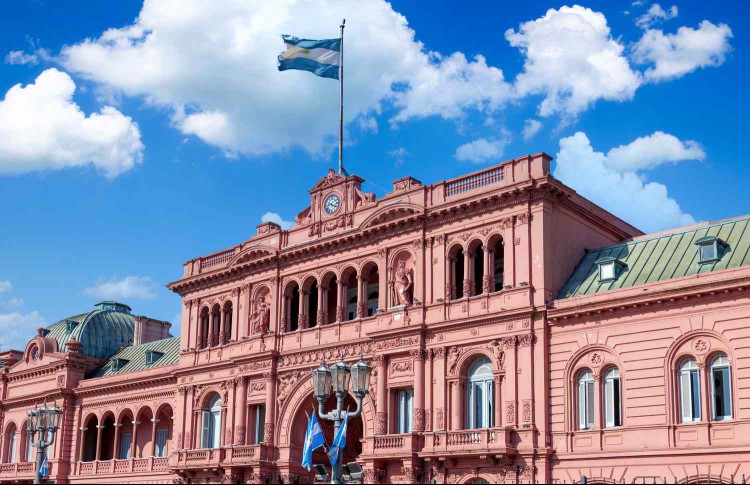
Eligah-Lovkoff / Getty Images
- GDP: $640 billion
- Population: 46.65 million
- GDP per Capita: $13,730
- HDI: 0.849
Argentina is a developing country.
Argentina boasts a large and diversified economy. The country's services sector accounts for the largest portion of its GDP, followed by industry and agriculture. Its major industries include food processing, automobiles, and consumer goods. Argentina also faces economic risks, primarily due to its debt obligations and high inflation.
Argentina has a life expectancy at birth of 76 years, while infant mortality is relatively at eight deaths per 1,000 live births.
Australia
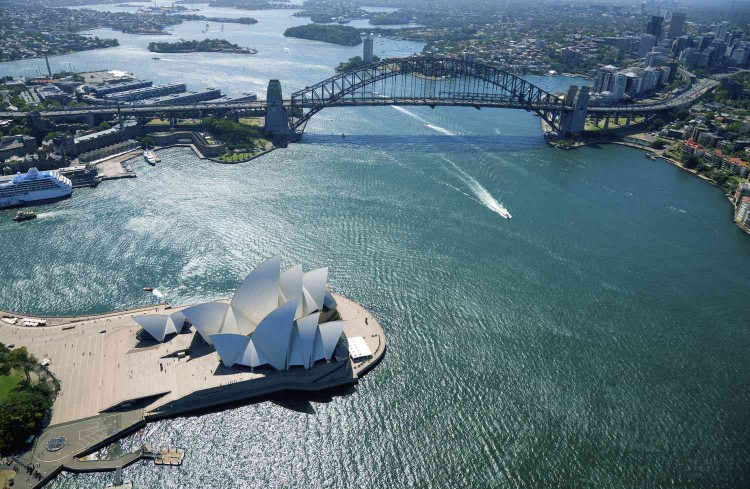
Michael Dunning / Getty Images
- GDP: $1.72 trillion
- Population: 26.6 million
- GDP per Capita: $64,711
- HDI: 0.946
Australia is a developed country.
The Land Down Under has widespread industrialization and provides quality healthcare for the majority of its citizens. Australians also enjoy a higher quality of life than some other countries; according to the Organization for Economic Cooperation and Development (OECD), citizens on average graded their life satisfaction as 7.5 out of 10, which is reasonably better than the 6.7 global average. Australia is one of the wealthiest Asia–Pacific nations, enjoying several years of economic growth.
Australia has a high average life expectancy at birth of 83.6 years, which can be attributed to its excellent healthcare system. The country's infant mortality rate (as of 2022) is three per 1,000 live births, one of the lowest rates in the world.
Austria

Anton Petrus / Getty Images
- GDP: $516 billion
- Population: 9.1 million
- GDP per Capita: $56,506
- HDI: 0.926
Austria is a developed country.
Austria has one of the strongest economies in Europe, and boasts a diversified trade portfolio. Though it has an aging labor force, it has a large population of refugees.
Life expectancy in Austria is high at 81 years, while infant mortality is low at three deaths per 1,000 live births.
Belgium
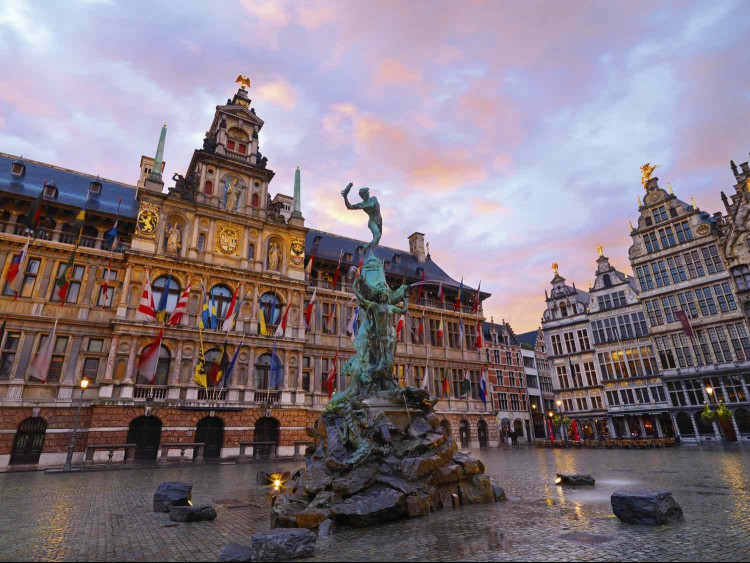
Shaun Egan / Getty Images
- GDP: $632.2 billion
- Population: 11.8 million
- GDP per Capita: $53,475
- HDI: 0.942
Belgium is a developed country.
The Kingdom of Belgium has a life satisfaction rating of 6.5.
At 77.2%, the services sector accounted for the largest portion of the country's GDP, according to the CIA World Factbook. Belgium lacks an abundance of natural resources, making it heavily reliant on imports of raw materials. However, given its central geographic location, highly developed transport network, and diversified industrial and commercial base, the country is well suited to act as a major exporter of manufactured goods.
The country's average life expectancy at birth is 82.3 years, while its infant mortality rate was three deaths per 1,000 live births (as of 2022).
Brazil

- GDP: $2.17 trillion
- Population: 216.42 million
- GDP per Capita: $10,043
- HDI: 0.760
Brazil is a developing country.
Though it has several characteristics of a developed nation, including the largest economy in South America or Central America, Brazil is still considered a developing country due to its lower GDP per capita, higher infant mortality rate, and other factors.
Its high birth rate, at 13 births per 1,000 people in 2022, is also a common characteristic of a developing country. Several factors contribute to all of these metrics, including lack of clean water; limited access to adequate healthcare, particularly in rural areas; abysmal housing conditions in many regions; and substandard diets.
A Brazilian's average life expectancy at birth, at 73 years, ranks higher than that of some other developing countries, though it's just above the 2022 global average of 72 years.
Canada

Bruce Yuanyue BI / Getty Images
- GDP: $2.14
- Population: 40.97 million
- GDP per Capita: $53,371
- HDI: 0.935
Canada is a developed country.
As the 9th-largest world economy based on GDP, Canada has a diverse economic base. It has a wealth of natural resources, including oil, gas, and coal. As such, the country can support its own energy needs as well as export natural resources to other countries.
Despite this fact, Canada is also a world leader in the production and use of renewable energy sources, which provide approximately 18.9% of the country's overall energy supply, while moving water specifically accounts for 59.3% of its electricity. Canada's proximity to the United States and a favorable exchange rate have also contributed to a strong manufacturing climate in the country.
Canadians enjoy universal healthcare coverage, with all residents having access to free medical care through a government-provided program. The country's average life expectancy is 81 years, while its infant mortality rate was four deaths per 1,000 live births (based on 2022 data).
China
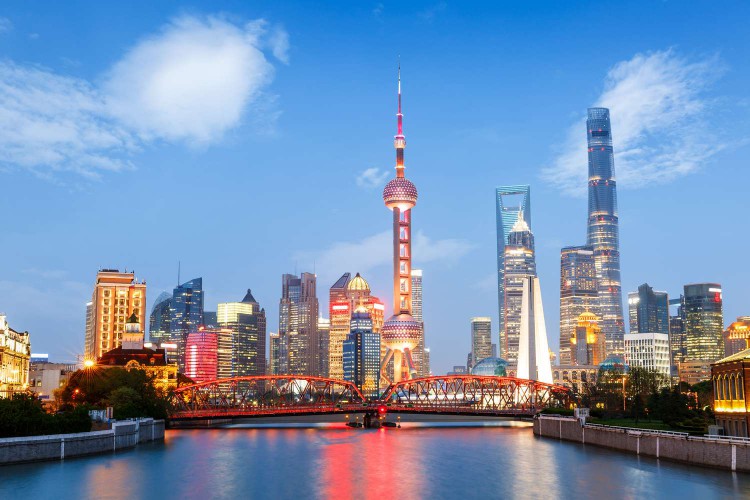
Zhaojiankang / Getty Images
- GDP: $17.79 trillion
- Population: 1.41 billion
- GDP per Capita: $12,614
- HDI: 0.788
China is a developing country.
Despite having the world's second-largest economy and the largest military, China is still not classified as a developed country by the criteria of most organizations. In addition to having one of the lowest GDPs per capita on this list, another attribute indicating that China is still developing is its dependence on agriculture, although this has been trending downward over time. According to the CIA World Factbook, 7.9% of China's overall GDP was derived from agriculture.
China's average life expectancy at birth is 79 years and its infant mortality rate was five per 1,000 live births (based on 2022 data). Although these rates aren't exceptionally high, they are noticeably worse than most other countries with trillions of dollars in overall wealth.
France

Pawel.gaul / Getty Images
- GDP: $3.03 trillion
- Population: 68.17 million
- GDP per Capita: $44,460
- HDI: 0.910
France is a developed country.
The French Republic is one of the world's economic powerhouses. It has the seventh-largest economy by GDP. The country benefits from a diverse economy, including tourism, manufacturing, and pharmaceuticals. Even though the French government has partially or fully privatized many prominent companies, it still has a strong presence in its power, public transport, and defense sectors.
French citizens enjoy a higher-than-average life expectancy at birth of 82 years and a low infant mortality rate of three deaths per 1,000 live births (based on 2022 data). The French healthcare system combines universal access to care with a substantial amount of freedom for patients, with surveys showing that citizens are overall satisfied with their country's system.
Germany

photosvit / Getty Images
- GDP: $4.46 trillion
- Population: 84.5 million
- GDP per Capita: $52,745
- HDI: 0.950
Germany is a developed country.
Driven by its highly skilled labor force, Germany is Europe's strongest economy and the fourth-largest economy in the world. The nation is known for delivering world-class quality products including machinery, motor vehicles, electronics, and pharmaceuticals.
Germany has a life expectancy at birth of 81 years as well as an infant mortality rate of only three deaths per 1,000 live births (based on 2022 data).
German citizens enjoy access to universal healthcare coverage. All Germans must belong to a not-for-profit sickness fund that covers most necessary medical procedures and medications.
India
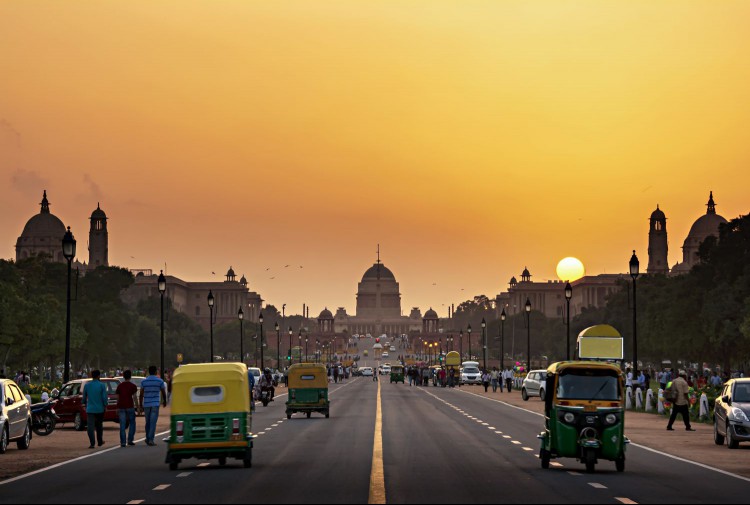
Kriangkrai Thitimakorn / Getty Images
- GDP: $3.55 trillion
- Population: 1.43 billion
- GDP per Capita: $2,485
- HDI: 0.644
India is a developing country.
Although India is an exceptionally wealthy country (ranked fifth in terms of overall GDP), like China, its large population causes a rather low GDP per capita. The Republic of India is considered both a newly industrialized nation and one of the fastest developing countries on Earth. However, the country continues to struggle with issues like widespread poverty, poor water and sanitation, and overpopulation.
India hosts a diverse economy, ranging from traditional farming to contemporary agriculture and handicrafts to a wide range of industrial products. Thanks to a large and well-educated English-speaking population, India is a major exporter of IT services, business outsourcing services, and software workers.
India has a life expectancy at birth of 68 years, as well as an extremely high infant mortality rate of 26 deaths per 1,000 live births (based on 2022 data).
Indonesia
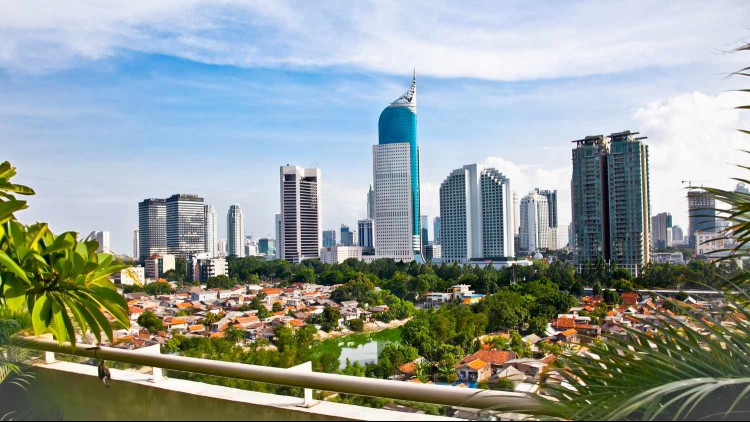
Master 2 / Getty Images
- GDP: $1.37 trillion
- Population: 277.5 million
- GDP per Capita: $4,940
- HDI: 0.713
Indonesia is a developing country.
The Republic of Indonesia is the world's most populous Muslim-majority country and Southeast Asia's largest economy. The nation's key exports include rubber, animal and vegetable fat, mineral fuels, machinery, electrical machinery, and mechanical appliance parts. A unique aspect of Indonesia's quality of life is that the country lies within the Pacific Ring of Fire, which is responsible for 90% of earthquakes and has 75% of the world's active volcanoes.
In addition to natural disaster hazards, the nation also faces challenges more common to developing countries, with 18 million Indonesians lacking safe water, 20 million lacking access to improved sanitation facilities, and 22.9 million being unable to meet their dietary requirements.
Indonesia has a life expectancy at birth of 68 years, as well as a high infant mortality rate of 19 deaths per 1,000 live births (based on 2022 data).
Ireland
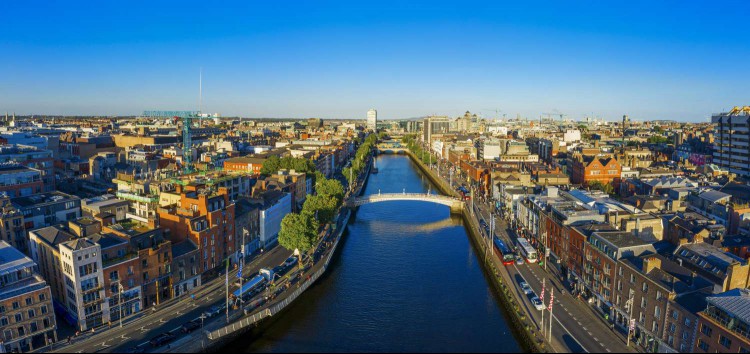
Pawel.Gaul / Getty Images
- GDP: $545.62 billion
- Population: 5.26 million
- GDP per Capita: $103,685
- HDI: 0.950
Ireland is a developed country.
Given its relatively high GDP and small population, Ireland has the fifth-highest GDP per capita of any nation on Earth. The country has benefited from large, multinational corporations setting up shop in the country due to favorable tax treatments. However, in 2021, the country joined the Organization for Economic Cooperation and Development's (OCED) tax agreement to align with OECD taxes.
The country is primarily a services country, with the sector making up 60% of their GDP. Industry makes up 39%, with the remainder being agriculture. Ireland has a life expectancy age at birth of 83 and a mortality rate of three deaths per 1,000 births.
Israel
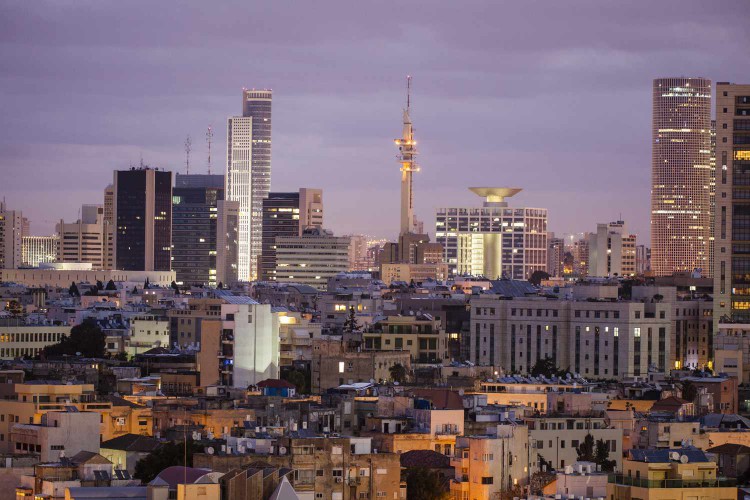
Richard T. Nowitz / Getty Images
- GDP: $509.9 billion
- Population: 9.76 million
- GDP per Capita: $52,262
- HDI: 0.915
Israel is a developing country.
Israel is a high-income country that boasts a reputable high-tech industry. Services make up a significant portion of the economy, followed by industry and agriculture. Major sectors include aviation, communications, pharmaceuticals, and food and drinks.
The country has a high life expectancy of 83 years and a low infant mortality rate of three deaths per 1,000 live births.
Italy

Alexander Spatari / Getty Images
- GDP: $2.25 trillion
- Population: 58.76 million
- GDP per Capita: $38,373
- HDI: 0.906
Italy is a developed country.
Italy's manufacturing industry is very well developed and it is ranked seventh among manufacturing countries, according to the World Economic Forum. In particular, Italy is known for producing high-quality luxury products such as fashion accessories, expensive cars, and food products. Nearly 74% of Italy's workers are employed in the services sector, while just over 2% work in agriculture, a strong indicator that this nation is developed.
Italy is ranked tenth in the world for overall GDP. The present-day commercial banking industry had its beginning in Italy and today, the nation's largest financial services company, Intesa Sanpaolo, is regularly ranked on the Fortune 500 list.
The country's average life expectancy at birth is 83 years, while its infant mortality rate is a low two deaths per 1,000 live births (based on 2022 data).
Japan
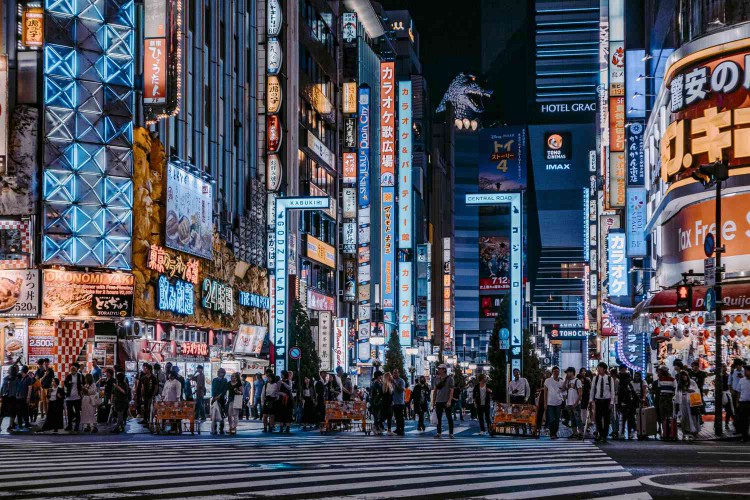
DuKai photographer / Getty Images
- GDP: $4.21 trillion
- Population: 124.6 million
- GDP per Capita: $33,834
- HDI: 0.920
Japan is a developed country.
Despite its smaller size compared to other economically healthy countries, such as France or Sweden, Japan is the third wealthiest nation on Earth in terms of overall GDP. Almost 70% of the nation's workforce is in the services sector, while approximately 1.1% is in agriculture.
The archipelago is heavily dependent on imports of natural resources and it is the world's largest net buyer of food products, the largest importer of liquefied natural gas (LNG), and the third-largest coal importer. Japan has an average life expectancy at birth of 84 years and an exceptionally low infant mortality rate of two deaths per 1,000 live births (based on 2022 data).
Mexico
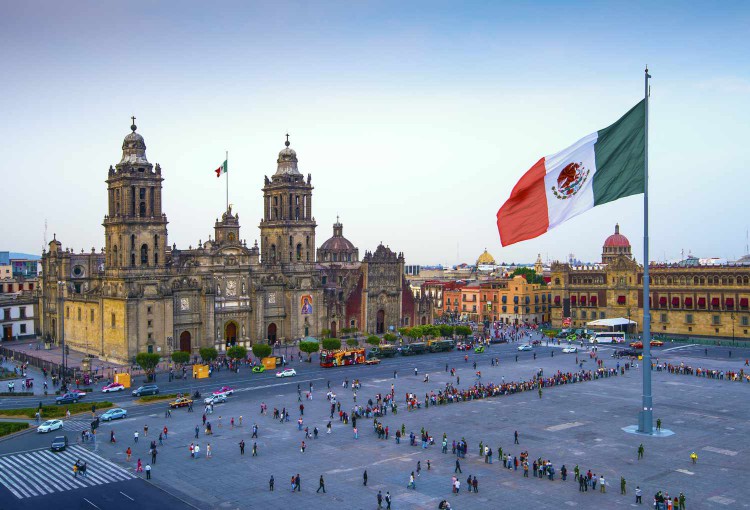
John Coletti / Getty Images
- GDP: $1.78 trillion
- Population: 128.45 million
- GDP per Capita: $13,926
- HDI: 0.781
Mexico is a developing country.
Mexico's development status is developing, even though it exceeds the majority of its peers in the developing world on most economic and quality-of-life metrics. In fact, according to the CIA World Factbook, Mexico's economy wasn't heavily reliant on agriculture, at just 3.6%, while its services and industry sectors were much larger.
Various other factors come close to, but don't quite hit, acceptable levels for developed-nation status. A life expectancy of 75 years at birth ranks Mexico higher than most developing countries, but it still falls below the life expectancy levels for its North American neighbors. The story is the same for the infant mortality rate, which was 11 per 1,000 live births (based on 2022 data).
In addition, Mexico is plagued by large swaths of poverty, lack of quality healthcare, and limited access to clean water.
The Netherlands
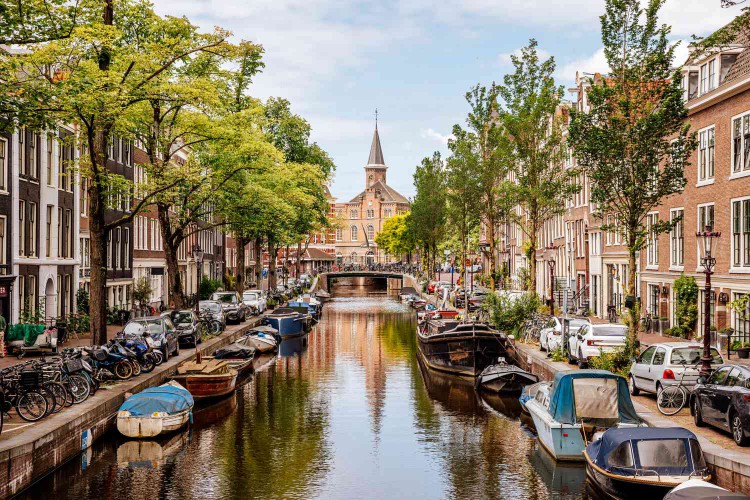
Alexander / Spatari
- GDP: $1.12 trillion
- Population: 17.88 million
- GDP per Capita: $62,537
- HDI: 0.946
The Netherlands is a developed country.
This nation demonstrates relative strength across all the metrics and combines a robust economy with a high standard of living for the majority of its residents. In 2017, the Dutch were the fourth-lowest population at risk of poverty or social exclusion in the European Union. The Netherlands has a life expectancy at birth of 82 as well as an infant mortality rate of three deaths per 1,000 live births (as of 2022 data).
According to the OECD, the Netherlands fares well in providing its citizens with the tools necessary to build a high quality of life. Although the country is below average in environmental quality, the health and life expectancies for residents are in line with other developed countries.
The Netherlands also ranks very highly in terms of work-life balance, with nearly 0% of residents reporting that they work long hours in comparison with the global average of 10%.
Norway
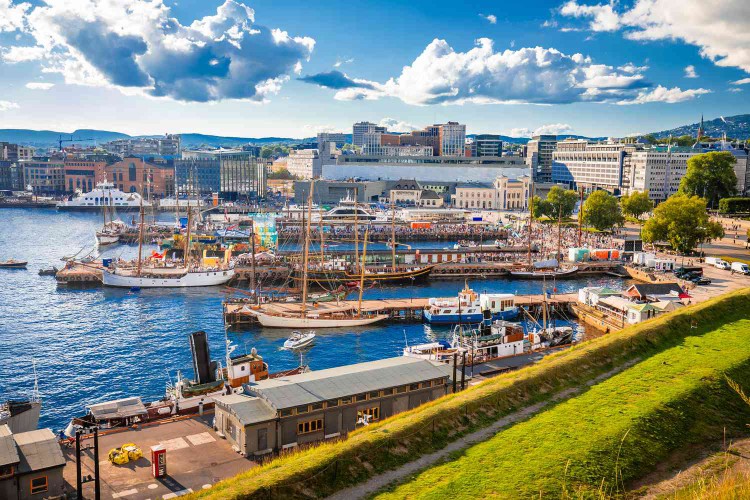
xbrchx / Getty Images
- GDP: $485.51 billion
- Population: 5.52 million
- GDP per Capita: $87,961
- HDI: 0.966
Norway is a developed country.
Norway is a high-income country that leads in the energy sector. It is not a part of the European Union. The country boasts a generous welfare system thanks to its sovereign fund. Major agricultural products include milk, barley, wheat, and animal products.
The life expectancy in Norway is 83 years at birth. The Infant mortality rate is a low two per every 1,000 live births.
Poland
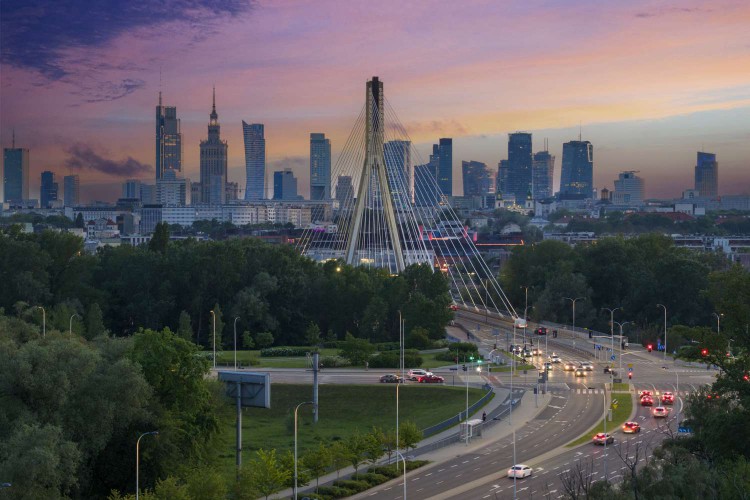
Jacek Kadaj / Getty Images
- GDP: $811.23 billion
- Population: 36.69 million
- GDP per Capita: $22,113
- HDI: 0.881
Poland is a developed country.
A Soviet satellite state until 1989, Poland has nearly completed its transformation into a democratic and market-oriented economy.
Like many developed nations, Poland offers both free healthcare and higher education for its citizens. As of 2022, the country's infant mortality rate was four per 1,000 live births, while the life expectancy rate at birth was 77 years. The country also has 17 properties recognized on the UNESCO World Heritage List, only one of which isn't a cultural site.
Russia

Ayhan Altun / Getty Images
- GDP: $2.02 trillion
- Population: 143.83 million
- GDP per Capita: $13,817
- HDI: 0.821
Russia is a country in transition.
Russia is not currently classified as a developed country, though it once reigned alongside the United States as a world superpower. The country's economy fell apart with the 1991 implosion of the Soviet Union as the Cold War came to a close. Recently, the country's war on Ukraine has adversely impacted its economy due to sanctions imposed by other nations.
Poverty is widespread (at 13% of the population, the majority of whom are children) and life satisfaction is low (with Russian citizens on average giving it a 2.1 out of 10). As is typical of a non-developed country, the exportation of natural resources fuels much of Russia's economy.
Its 2022 infant mortality rate is four per 1,000, while life expectancy at birth is 73 years.
Saudi Arabia

Abdullah Al-Eisa / Getty Images
- GDP: $1.07 trillion
- Population: 36.95 million
- GDP per Capita: $28,895
- HDI: 0.875
Saudi Arabia is a developing country.
On a purely monetary level, the Kingdom of Saudi Arabia is rather successful when compared to other developing countries. It was the largest economy in the Middle East in terms of GDP in 2022 but its economy lacks diversification. Over 87% of government revenue is derived from oil exports, making Saudi Arabia the world's largest exporter of petroleum.
Additionally, according to a 2022 Amnesty International report, the government has been heavily criticized for numerous human rights abuses. Nearly all known Saudi Arabian human rights defenders within the country have been detained or imprisoned.
Saudi Arabians have an average life expectancy at birth of 78 years as well as an infant mortality rate of six deaths per 1,000 live births (as of 2022).
Singapore
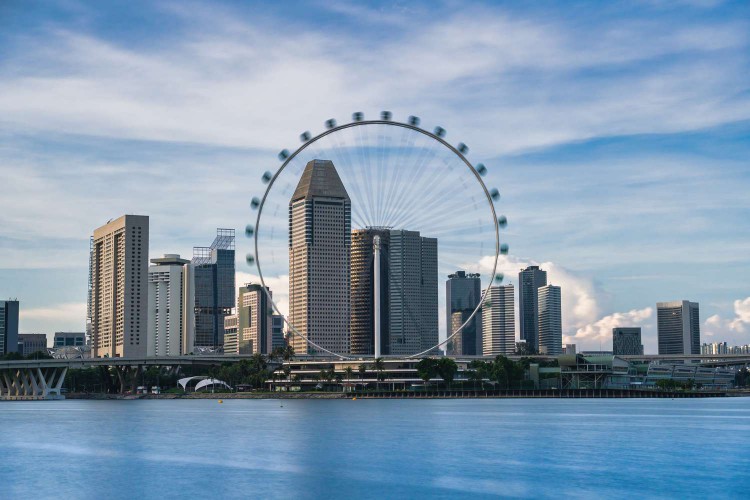
Supachai Panyaviwat / Getty Images
- GDP: $501.4 billion
- Population: 5.19 million
- GDP per Capita: $84,734
- HDI: 0.949
Singapore is a developing country.
Singapore is a high-income economy in Southeast Asia. It's known for its financial markets, energy exports, and business-friendly regulations. Services compose the large majority of Singapore's GDP while industry makes up about the remaining quarter.
The average life expectancy in Singapore is 83 years at birth. The infant mortality rate is 2 per 1,000 live births.
South Korea
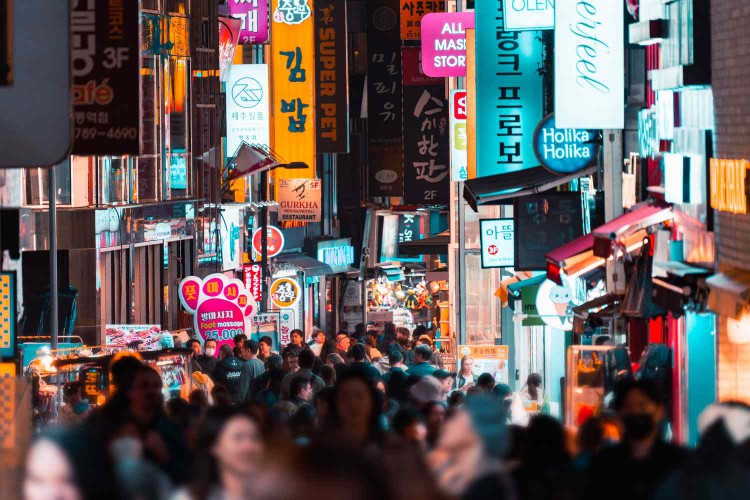
Jackyenjoyphotography / Getty Images
- GDP: $1.71 trillion
- Population: 51.71 million
- GDP per Capita: $33,121
- HDI: 0.929
South Korea is a developing country.
The country has a strong GDP and offers its citizens widespread access to quality healthcare and higher education. Following several decades of rapid economic growth and global integration, the Republic of Korea has become a high-technology and industrialized nation, with its most important sectors being electronics, telecommunications, automobile production, chemicals, shipbuilding, and steel.
That said, the country is reliant on exports and is currently facing other major challenges, such as an aging population and low worker productivity. Life expectancy at birth is 83 years. The infant mortality rate is two per 1,000 live births, as of 2022.
Spain
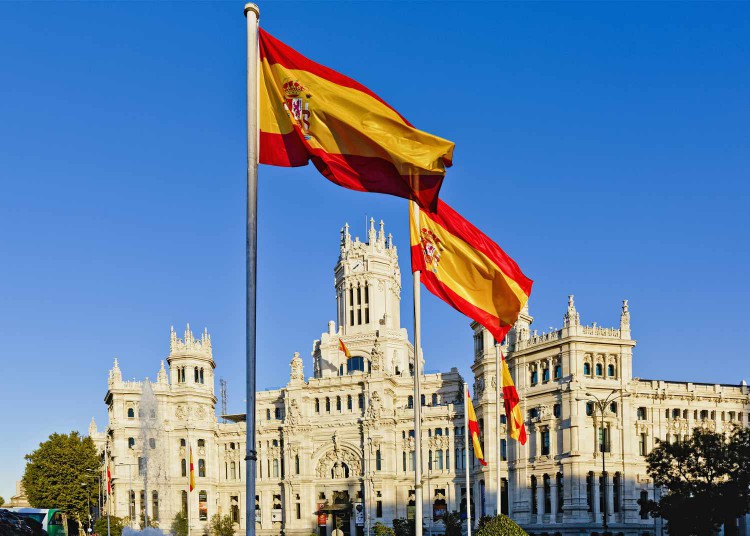
Rudy Sulgan / Getty Images
- GDP: $1.58 trillion
- Population: 48.37 million
- GDP per Capita: $32,677
- HDI: 0.911
Spain is a developed country.
Spain has a strong GDP, a 99% literacy rate, and a healthcare system that's one of the best in the world.Since returning to a democratic system in 1975, Spain has become the eurozone's fourth-largest economy, with a diverse assortment of industries including manufacturing, financial services, pharmaceuticals, textiles and apparel, footwear, chemicals, and tourism.
Spain's infant mortality and life expectancy numbers are excellent; an estimated three infants died per 1,000 live births in 2022, and the average Spaniard lives 83 years.
Sweden
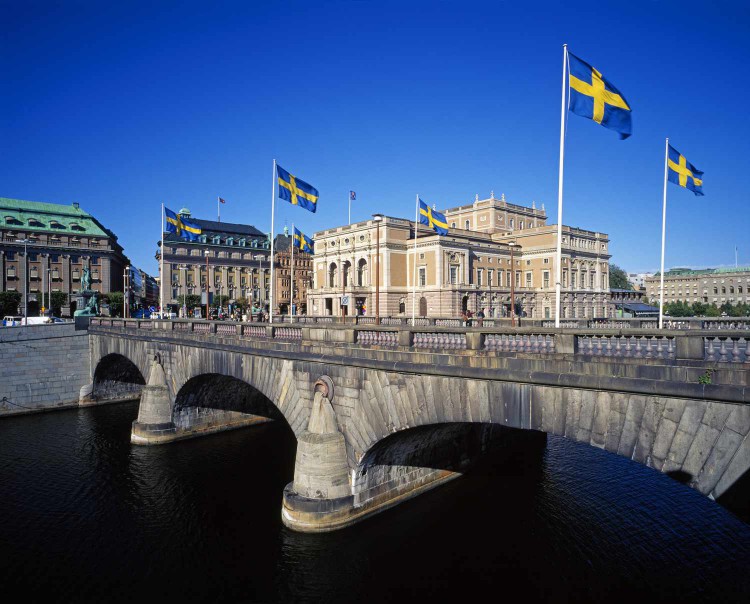
Murat Taner / Getty Images
- GDP: $593.27 billion
- Population: 10.53 million
- GDP per Capita: $56,205
- HDI: 0.952
Sweden is a developed country.
Sweden is one of the most highly developed post-industrial societies in the world. Sweden's life expectancy at birth is 83 years, while infant mortality is two deaths per 1,000 live births (based on 2022 data).
Additionally, Swedish citizens have free access to healthcare and higher education. The average Swede enjoys nearly 20 years of education. As a society, Sweden places great importance on environmental sustainability as well.
Switzerland
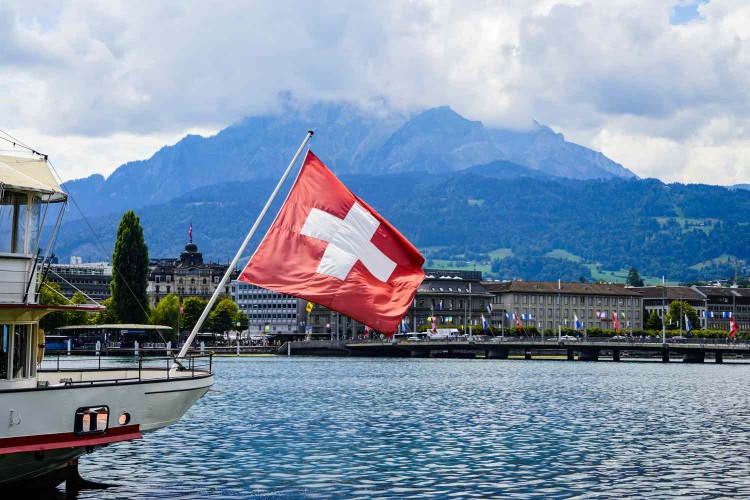
Hadi Zaher / Getty Images
- GDP: $884.94 billion
- Population: 8.85 million
- GDP per Capita: $99,994
- HDI: 0.967
Switzerland is a developed country.
According to the World Bank, Switzerland has the eighth-highest GDP per capita. This can be attributed to the country's highly skilled labor force which helps compensate for its smaller population.
The country's largest economic sectors are financial services, precision manufacturing, metals, pharmaceuticals, chemicals, and electronics. Switzerland has a universal healthcare system while also preserving a private marketplace.
The country's average life expectancy at birth is 83 years. It has an infant mortality rate of four per 1,000 live births (based on 2022 data).
Thailand

Kan Wang / Investopedia
- GDP: $514.95 billion
- Population: 71.80 million
- GDP per Capita: $7,171
- HDI: 0.803
Thailand is a developing country.
The Kingdom of Thailand is the second-largest economy in Southeast Asia. Thailand has a free-market economy with relatively well-developed infrastructure. About two-thirds of the country's GDP is derived from exports of electronics, agricultural commodities, automobiles and parts, processed foods, and other goods.
Over the last four decades, the country has moved from a low-income to an upper-income country by making substantial progress in social and economic development. The population's average life expectancy at birth is 80 years, while its infant mortality rate was a fairly high seven per 1,000 live births (per 2022 data).
Turkey
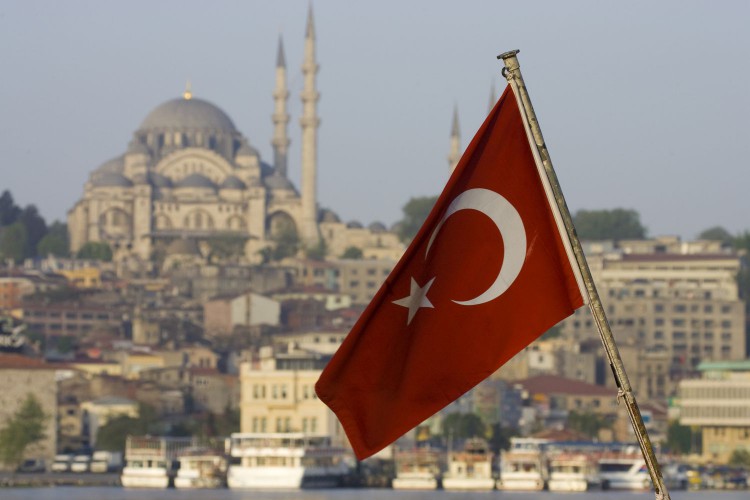
Darrell Gulin / Getty Images
- GDP: $1.108 trillion
- Population: 85.33 million
- GDP per Capita: $12,986
- HDI: 0.855
Turkey is a developing country.
Turkey is perhaps the best example of a country that straddles the line between developed and developing. In the past, the UN has classified it as a developed country. Today, most groups, including Turkey itself, agree on the country's status as a developing nation.
Confounding the issue are Turkey's GDP, infant mortality rate, and life expectancy, all of which hover in the gray area. Its infant mortality rate of eight per 1,000 live births, as of 2022, is lower than some other developing countries, but it's still fairly high. Conversely, the population's life expectancy at birth is 78 years.
United Arab Emirates
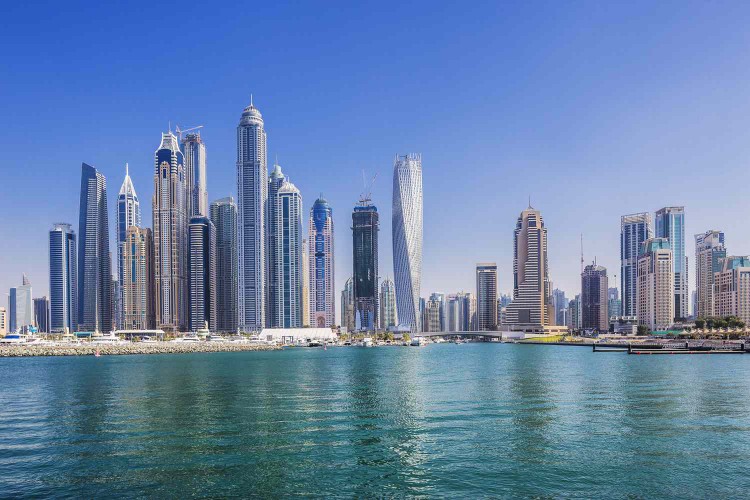
Maremagnum / Getty Images
- GDP: $504.17 billion
- Population: 9.52 million
- GDP per Capita: $52,977
- HDI: 0.937
The United Arab Emirates is a developing country.
The United Arab Emirates a major economy in the Middle East. Formerly an oil-driven economy, the country has built strong trade and diversified partnerships. Today, the services and industry sectors compose roughly equal halves of the GDP.
The average life expectancy in the United Arab Emirates is 79 years. The infant mortality rate is four per 1,000 live births.
United Kingdom
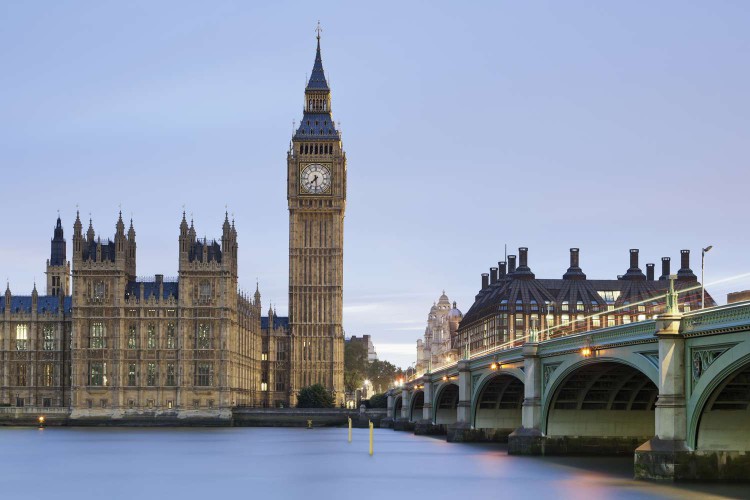
Paul Panayiotou / Getty Images
- GDP: $3.34 trillion
- Population: 68.35 million
- GDP per Capita: $48,866
- HDI: 0.940
The United Kingdom is a developed country.
The United Kingdom of Great Britain and Northern Ireland was the sixth-largest country by GDP in 2022, with Great Britain being the first industrialized country in history. GDP growth is heavily reliant on the services sector, particularly banking, insurance, and business services, whereas large oil and natural gas reserves are shrinking.
In 2016, British citizens voted in favor of departing from the European Union—a decision that became known as Brexit. The U.K. formally left the EU on January 31, 2020, although there wasn't a proper trade agreement between the two entities until a provisional one was approved by the European Parliament on April 28, 2021.
The country's average life expectancy is 82 years, while its infant mortality rate was quite low at four per 1,000 live births (based on 2022 data).
United States
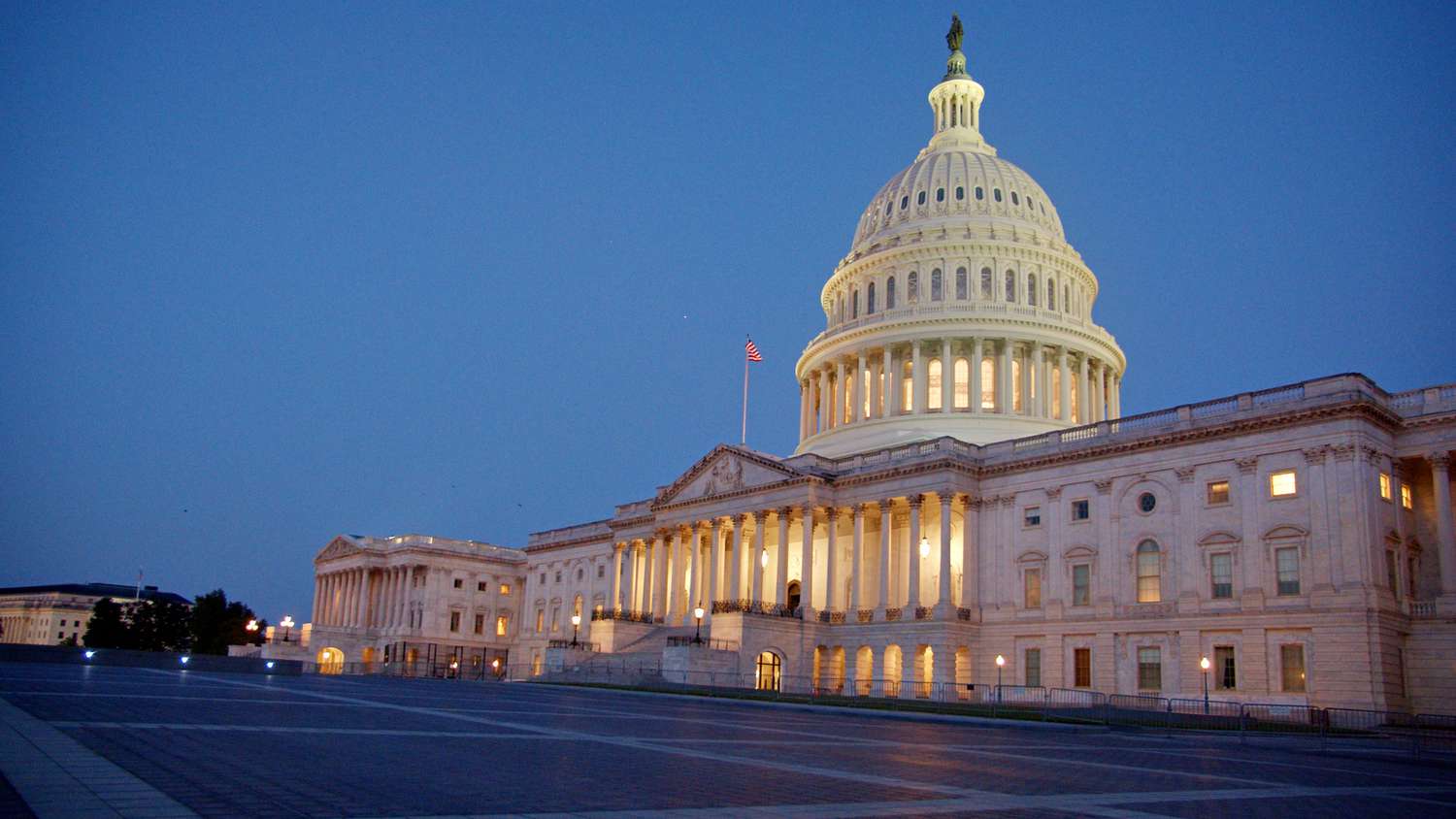
ANDREY DENISYUK / Getty Images
- GDP: $27.36 trillion
- Population: 334.91 million
- GDP per Capita: $81,695
- HDI: 0.927
The United States is a developed country.
As of 2022, the United States is the wealthiest country on Earth in terms of its total GDP, which represents 25% of the world's entire wealth. The U.S. is both the largest goods importer and the second-largest exporter, making it the world's largest trading nation. Additionally, as of 2022, America has the third-largest military in terms of personnel.
However, despite its wealth and high HDI score, the U.S. has also been heavily criticized for traits more commonly seen in developing nations, such as a poverty rate higher than any other industrialized nation, having infrastructure in severe need of repair and overhaul, and being the only developed country without universal healthcare.
The country's average life expectancy at birth is 77 years from birth, while its infant mortality rate was five deaths per 1,000 live births (based on 2022 data).
Venezuela
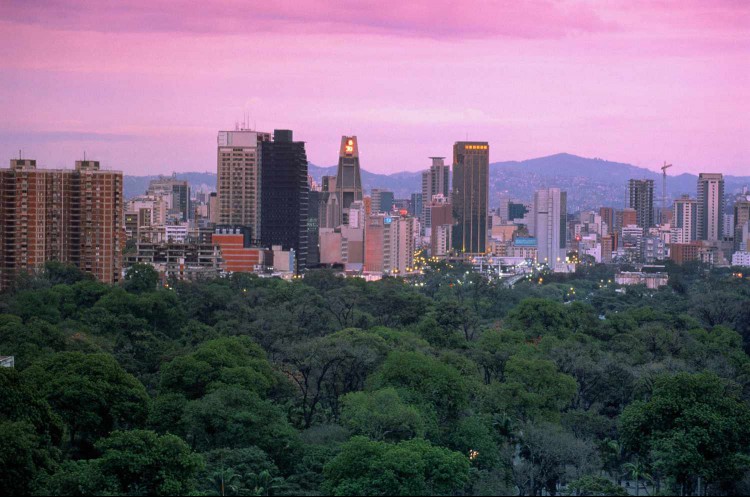
Will & Deni McIntyre / Getty Images
- GDP: $482 brillion
- Population: 28.8 million
- GDP per Capita: $15,975
- HDI: 0.699
Venezuela is a developing country.
Venezuela is a major South American economy. It has faced high levels of inflation since the mid-2010s, as well as political instability due to corruption and cuts to infrastructure spending. The services sector composes a majority of the country's GDP, followed by industry. Venezuela's top industries include agriculture, raw materials, equipment, and energy products.
The country's average life expectancy at birth is low at 71 years from birth. Its infant mortality rate was high at 21 deaths per 1,000 live births (based on 2022 data).
What Are 5 Countries That Are Developing?
Brazil, China, India, Indonesia, and Mexico are five examples of countries that are developing. Each boasts a sizable and diverse economy with a high GDP. These five countries typically rank lower in factors such as life expectancy and infant mortality, leading them to be classified as developing rather than developed.
What Are 7 Developed Countries?
Per the UN, there are 36 developed countries, all located in North America, Europe, or Asia. Those include the United States, Japan, Germany, the United Kingdom, France, Canada, and Italy, ranked by GDP.
What Is the Poorest Country in the World?
Ranking countries based on poverty depends heavily on criteria and definitions used. One of the most common metrics is GDP, which measures overall economic output. According to World Bank data, the country with the lowest GDP in 2022 was Tuvalu, an island nation in the Pacific Ocean.
What Is the Fastest Developing Country?
The rate at which a country is developing can be measured by real GDP growth, which is the annual percent change in GDP. In 2024, the country with the highest real GDP growth rate was Guyana at 33.9%.
The Bottom Line
Developed and developing nations share some common traits, but just because a nation is considered developed, that doesn't mean it is not lacking in certain areas. The same can be said for developing nations, whereby they may be lacking according to some indicators but have noteworthy strengths at the same time.
Government policy, foreign trade agreements, history, and natural resources play enormous roles in the health and size of a country's economy.

Comments on "Market Economy vs. Command Economy: What's the Difference?" :